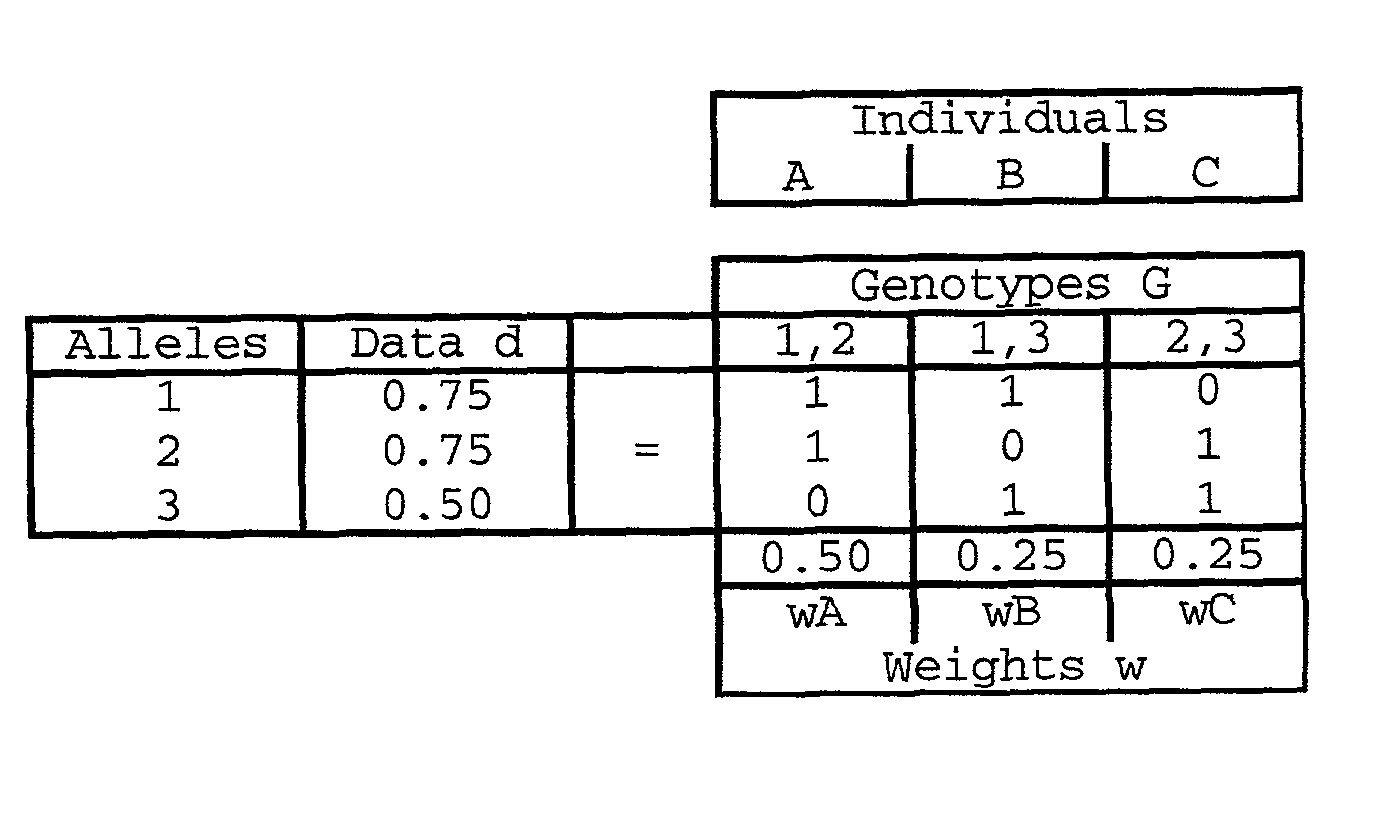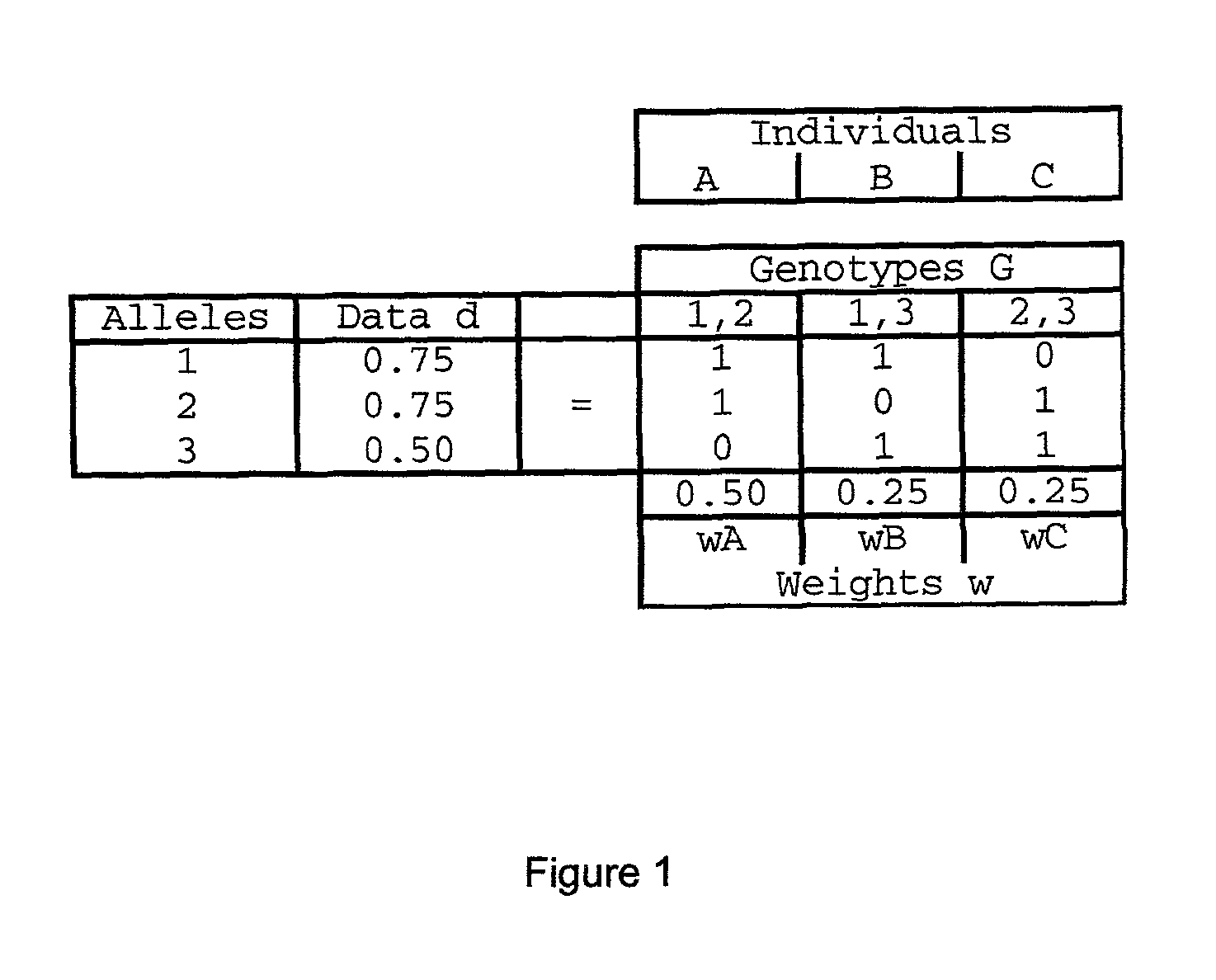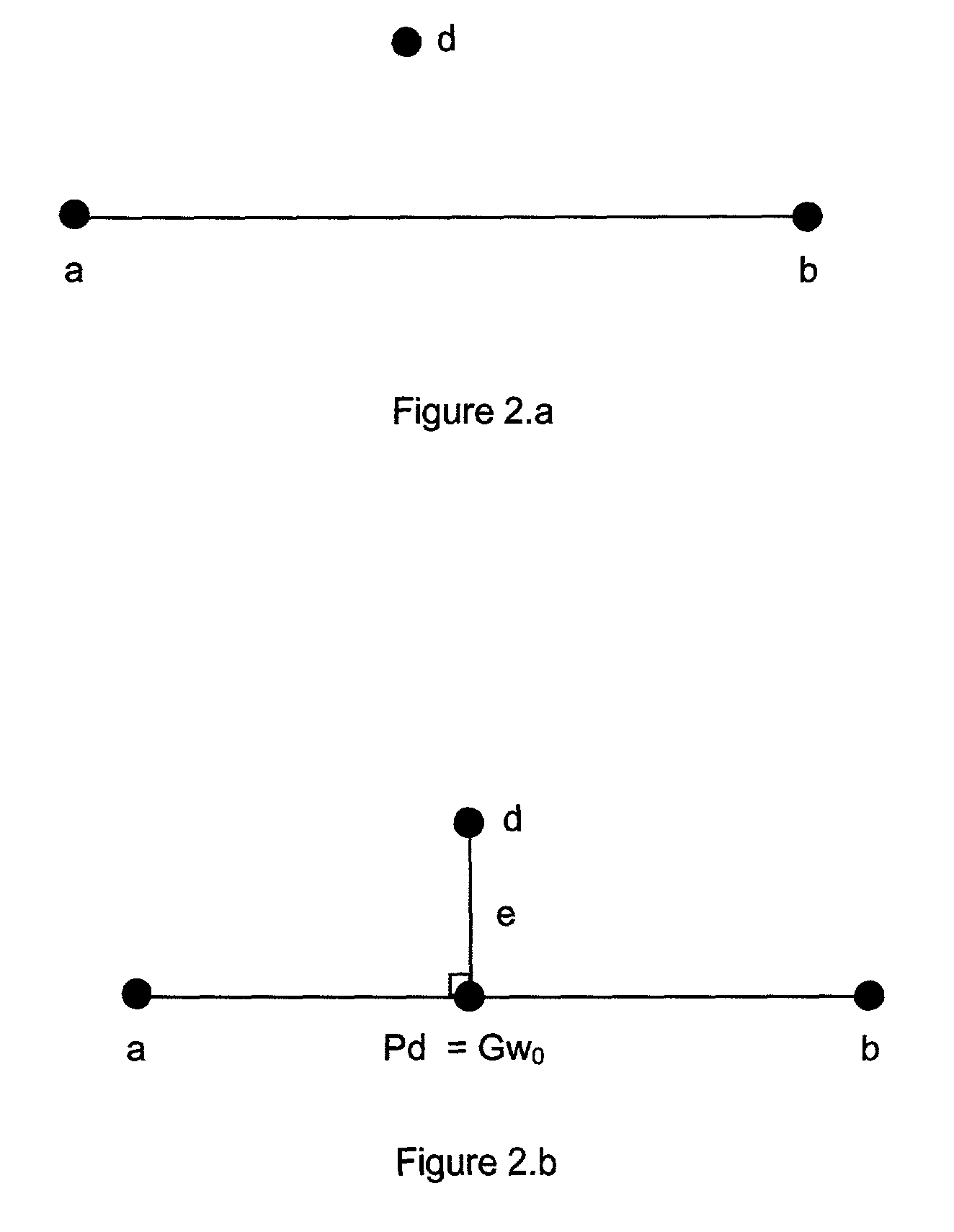Method and system for DNA mixture analysis
a technology of dna mixture and method, applied in chemical methods analysis, instruments, digital transmission, etc., can solve the problems of high cost and effort, slow and laborious forensic mixture analysis, and inability to timely report,
- Summary
- Abstract
- Description
- Claims
- Application Information
AI Technical Summary
Benefits of technology
Problems solved by technology
Method used
Image
Examples
Embodiment Construction
Linear Mixture Data
[0019]A detailed description of the data generation and initial data analysis process has been given (“Method and System for DNA Analysis,” filed Feb. 15, 2000, having Ser. No. 09 / 504,389), incorporated by reference. This section summarizes the key steps.
[0020]Step 1. Sample Extraction. The DNA is extracted from the sample (e.g., a forensic stain). This is preferably done using standard techniques such as cell lysis followed by inorganic solvent extraction, such as phenol chloroform or silica gel membranes. Chelex is another standard extraction mechanism. Additional lysis and processing may be done for extracting sperm DNA. It is preferable to remove PCR inhibitors (e.g., divalent cations, proteins) so that the PCR amplification can proceed as linearly as possible. Additional clean up steps, such as microcon purification, may be helpful. See (Ausubel F M, Brent R, Kingston R E, Moore D D, Seidman J G, Smith J A, et al., editors. Current Protocols in Molecular Biol...
PUM
| Property | Measurement | Unit |
|---|---|---|
| computation time | aaaaa | aaaaa |
| weights | aaaaa | aaaaa |
| concentrations | aaaaa | aaaaa |
Abstract
Description
Claims
Application Information
 Login to View More
Login to View More - R&D
- Intellectual Property
- Life Sciences
- Materials
- Tech Scout
- Unparalleled Data Quality
- Higher Quality Content
- 60% Fewer Hallucinations
Browse by: Latest US Patents, China's latest patents, Technical Efficacy Thesaurus, Application Domain, Technology Topic, Popular Technical Reports.
© 2025 PatSnap. All rights reserved.Legal|Privacy policy|Modern Slavery Act Transparency Statement|Sitemap|About US| Contact US: help@patsnap.com



